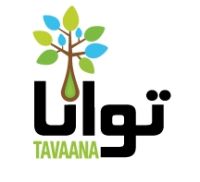Wednesday
Mar172010
Iran Analysis: What Does the Fire Festival Mean?
 Wednesday, March 17, 2010 at 7:54
Wednesday, March 17, 2010 at 7:54  Sometimes a celebration should be considered first as a celebration.
Sometimes a celebration should be considered first as a celebration.After months of reporting on tension and conflict, it was a pleasure to watch the joy of Iranians on Chahrshanbeh Suri, the eve of Iranian New Year celebration of the renewal of fire. Although there was a heavy security presence in main streets and squares, this did not --- as The Washington Post reported --- "block traditional celebrations".
Latest Iran Video: Two Views of the Fire Festival (16 March)
Instead, on side streets and outside residences across Iran, people gathered to set off firecrackers, sing, dance, and jump over the small fires which hark back to Zoroastrian tradition. An EA reader eagerly wrote us, "Our family live in a provincial town. It was rocking tonight with the sound of fireworks! Cud be heard in every part of the town :-)" Even in Press TV's state-sanitised video of events, there is the pleasure of an elderly woman gingerly skipping in her long dress over a few inches of flame.
I never had the sense, despite some eager chatter, that this was going to be an occasion for bring-down-the-Government marches. Some in the Western media, coming late to the party, had the misleading impression that this was going to be an attempted recovery of the blunted rally of 22 Bahman (11 February) --- The Guardian, which set up emergency LiveBlog coverage, seemed particularly disappointed --- but this was not a make-or-break Green Movement moment.
Instead, this was an occasion to celebrate Iranian identity and to have some fun. For me, that seems to be more than enough to observe and praise.
Sometimes a celebration should then be considered political.
But even if the videos coming out of Iran were limited and of basic quality --- the regime is still waging a cyber-war against communication --- and even if the direct protests of "Death to the Dictator" were scattered, don't be mistaken: even having fun and "being Iranian" can be a political act.
Ironically, we have the Supreme Leader to thank for making this clear. His clumsy intervention that Chahrshanbeh Suri “has no religious basis and is harmful and must be avoided” turned an appearance at the Fire Festival into a gesture of disregard or even defiance.
He may be Supreme Leader, but this was how far Ayatollah Khamenei's legitimacy extends. This morning, after thousands (how many thousands?) celebrated in his or her way, the Supreme Leader's "fatwa" has reportedly been removed from his website.
To show authority, security forces closed stores and shopping malls in Tehran during the afternoon and banned motorcycles in the city. Municipal garbage containers were collected to prevent their being used to make bonfires. Thousands of officers were placed at the capital's main gathering points. Neighborhood police officers went door to door warning residents that large celebrations were banned.
As thousands (how many thousands?) still sang and danced and set off their firecrackers, was this a sign of regime legitimacy or a sign of forced authority? As thousands (how many thousands?) shared the festivities with friends and family, was this a sign of confidence or a sign of fear?
As we closed coverage last night, the message came in from a Tehran resident, via another EA reader, who had been told of "Western" reports that nothing political had occurred during Chahrshanbeh Suri. The resident, after an evening of joy and celebration, simply responded:
"In Iran everything is political."

